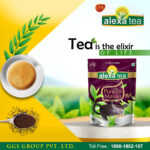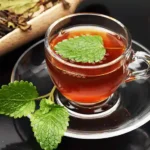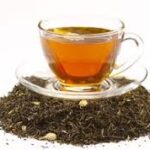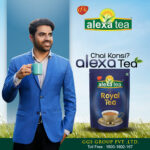Types Of Tea In India – Tea is a delightful beverage available in a range of flavors and hues. The warmth of the teacup spreads from the fingers wrapped around it to the very soul of the person drinking it. Do you enjoy drinking tea? Then the various types of tea in India would have peaked your attention. Tea consumption has also been related to several health advantages. Furthermore, it is a delectably complex beverage that has played an important role in the formation of numerous cultures.
Every year, India produces up to one billion kg of tea. As a result, India is the world’s leading tea grower and the fourth-largest tea exporter. The top three are Kenya, China, and Sri Lanka. Tea is such a large commodity in India that a board was constituted to oversee all aspects. In addition to producing a large amount of tea, India consumes a large amount of the beverage. The country consumes no less than 19% of the entire amount of tea drunk worldwide. In reality, over 76% of tea produced in India is consumed in the nation of origin.
Types Of Tea In India
Camellia sinensis is a plant whose leaves and leaf buds are used to make all sorts of tea. It is native to East, South, and Southeast Asia, but it is now farmed all over the world in tropical and subtropical locations. Camellia sinensis v/s Sinensis and Camellia sinensis v/s assamica are the two most common types of tes in India. Teas are typically classified according to how they are processed. In broad spectru,. Tea comes in at least six varieties: white, yellow, green, oolong (or Wulong), black (known as red tea in China), and post-fermented tea. In the realm of teas, however, there is more than meets the eye. So, let’s find out more about them.
1. Black tea
Black tea, which is more oxidized than oolong, green, and white teas, is the most popular form of tea in India. In general, black tea has a stronger flavor than less oxidized teas. CTC (Crush, Tear, Curl) or Orthodox processing is used for black teas. The CTC process is efficient and successful for creating higher quality leaves with constant dark color from medium and lower grade leaves.
Orthodox processing is done by hand or by machine. High-quality teas are hand-processed. While the procedures used in orthodox processing vary depending on the tea type, this form of processing produces the excellent-grade loose tea that many aficionados want. Black tea keeps its flavor for many years.
2. Green tea
Green tea is brewed from Camellia sinensis leaves that have received little oxidation during processing. Green tea originated in China, although it has been connected with many Asian civilizations. Green tea extracts are now employed in a variety of drinks, health foods, nutritional supplements, and cosmetic products.
Green tea has several variations that have been developed in the countries where it is cultivated. Because of differences in growing circumstances, horticulture, production processes, and harvesting time, these types might differ significantly.
3. Oolong tea
Oolong tea (Camellia sinensis) is a traditional Chinese tea manufactured by a unique process that includes withering under the hot sun and oxidation before curling and twisting. Most oolong teas, especially those of high grade, employ distinct tea plant cultivars that are only used for certain types. Depending on the type and production manner, the degree of oxidation might range from 8 to 85%. Oolong tea is notably popular among South Chinese tea enthusiasts and Chinese ex-pats in Southeast Asia.
4. White tea
White tea is a lightly oxidized tea that is cultivated and collected largely in China, particularly in the provinces of Fujian and Zhejiang. It is now grown in Taiwan, India, Northern Thailand, and Eastern Nepal. The buds and leaves of the Chinese Camellia sinensis plant are used to make white tea. To avoid oxidation and additional tea processing, the leaves and buds are left to wither in natural sunlight before being lightly processed.
The term “white tea” refers to the thin silvery-white hairs on the tea plant’s unopened buds, which give the plant a whitish look. The beverage itself is pale yellow, not white or colorless.
5. Fermented teas
Fermented teas are teas that have been fermented in the open air for many months to several years. When tea is exposed to microflora, humidity, and oxygen in the air, it undergoes further oxidation via auto-oxidation, fermentation, and potentially some reactivated oxidative enzymes in the tea. This changes the scent of the tea and often softens its flavor, transforming formerly astringent or bitter teas into products with thick and unctuous mouth feels and aftertastes.
6. Yellow tea
Yellow tea is typically associated with a unique tea that is produced similarly to green tea, but with a slower drying phase in which the moist tea leaves are allowed to rest and become yellow. The tea has a yellow-green hue and a distinct aroma that differs from both white and green tea.
If the tea is cured with additional herbs, the fragrance can be mistaken for black, but there are still flavor similarities between yellow, green, and white teas. It can also refer to high-quality teas served in the Imperial court, however, this can apply to any type of imperially served tea.
Take Away
Alexa Tea is India’s largest tea maker. As tea fans and enthusiasts, we are aiming to address the market gap for value-added gourmet tea that has been cleaned and packaged at the source. We make every effort to maintain the purity and authenticity of real Indian teas because we feel they should be preserved.
Our manufacturing crew never combines tea from one origin with tea from another. As a consequence, you will only receive Passion of Purity. We make Pure Darjeeling Black, Darjeeling Green, Darjeeling White, Assam, Nilgiri, and Kangra teas with a passion for purity. In addition, we manufacture all varieties of tea in India, including specialty teas, flavored teas, and herbal infusions for the worldwide gourmet tea business.
Contact Details
Name: Alexa Tea
Address: SCO – 75, 1st Floor, Sector – 12, Panchkula 134115
Phone Number: 1-800-1802-167





